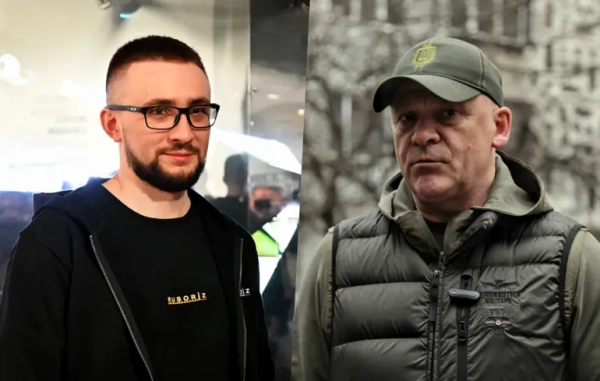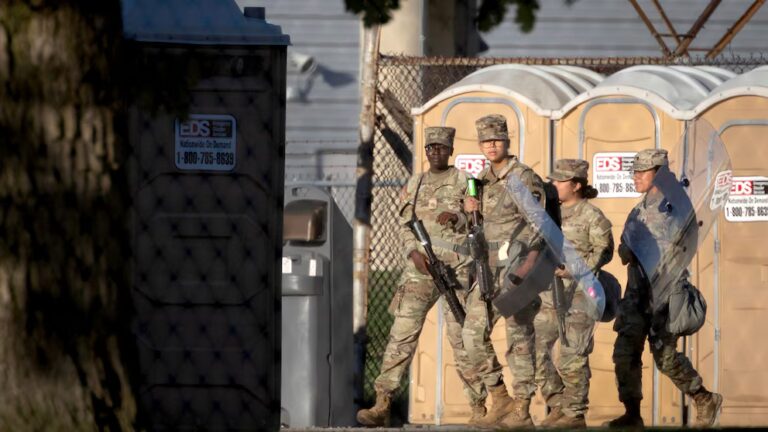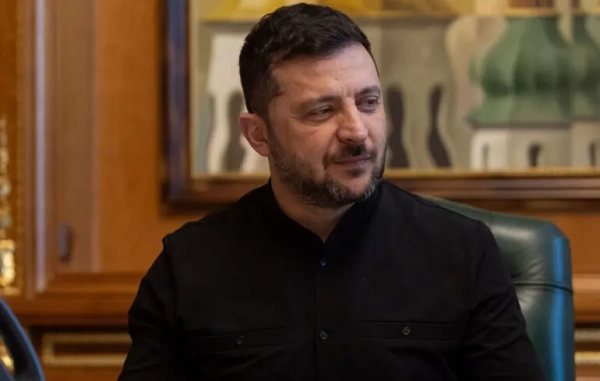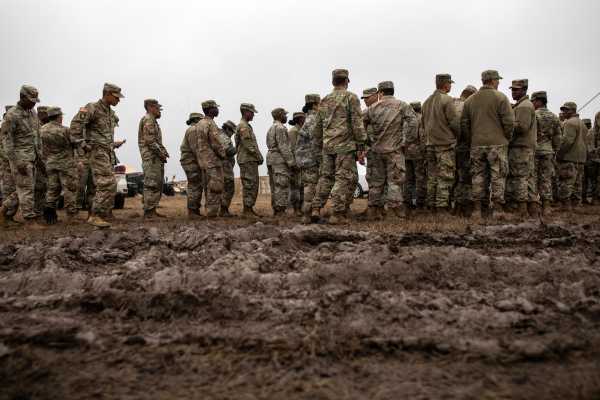
When President Donald Trump authorized the military to use “lethal force” — if necessary — against migrants at the southern border last week, it was in his purview as the commander in chief. But it created a legal gray area.
Tensions have escalated on the southern border since, as US law enforcement officials fired tear gas at the asylum seekers, including children, after violence broke out during a march near the San Ysidro Port of Entry over the weekend.
Trump’s administration has deployed more than 5,000 US military troops to the US-Mexico border, at first tasking them with mostly logistical work, and to help fortify the border with barbed wire in light of a migrant caravan from Central America.
But last week, White House Chief of Staff John Kelly issued a memo expanding the military’s authority to include protecting border agents — even if that means using deadly force. Defense Secretary James Mattis told reporters it’s unlikely that would happen. But still, it’s now a possibility, and likely without reason.
“On one hand, it is kind of ridiculous because there is nothing approaching an invasion there,” William Banks, a national security expert with Syracuse University, said. “There is no indication that there is a force lining the border that [Customs and Border Protection] couldn’t take care of. But on the other hand, if you take the Cabinet order’s language at face value, and take what the president is saying as credible threats, then it becomes grayer.”
There’s no question that the caravan has served a political purpose for Trump, who has tried to activate his voter base with fears of violent foreigners pouring over the southern border. But if Trump’s administration translates that race-baiting rhetoric into violence on the border, the administration will have a crossed a new line, one that could open them to a fight in the courts.
Trump’s “lethal force” authorization, briefly explained
For weeks, Trump has been making the case — often baselessly — that the migrant caravan poses an immediate and serious danger to the United States. Supported by Republican lawmakers, he’s created the specter of a crisis, with little evidence to back that up.
Trump has claimed, without evidence, that there are “criminals and unknown Middle Easterners are mixed in,” and that these asylum seekers will bring violence and drugs into the United States. His administration has used this rationale to deploy thousands of active-duty military to the border in California, Arizona, and Texas to support border agents.
There are more troops on the southern border than the US has in Syria to fight ISIS. And the Trump administration expanded their authority to include using “lethal force” to protect law enforcement, in a Cabinet memo signed November 20.
The memo states that troops may “perform those military protective activities that the Secretary of Defense determines are reasonably necessary,” if there is “credible evidence and intelligence,” including “a show or use of force (including lethal force, where necessary), crowd control, temporary detention, and cursory search.”
In other words, Trump has allowed Mattis and the Department of Homeland Security to use violence, if deemed necessary. Customs and Border Protection also has an existing use-of-force policy in place, which allows officers to respond with force when necessary but automatically reviews all uses of force to ensure they were appropriate. The use of tear gas by US Border Patrol agents Sunday will be reviewed under this policy.
“I now have the authority to do more,” Mattis told reporters, saying he’s waiting to see if Homeland Security Secretary Kirstjen Nielsen makes a detailed request. “Now we’ll see what she asks me.”
Trump himself has used violent rhetoric from the start, suggesting that migrants could be shot if they threw rocks at law enforcement. But Mattis has tried to downplay what the military will do at the border, saying most are not carrying weapons and will have minimal interaction with migrants.
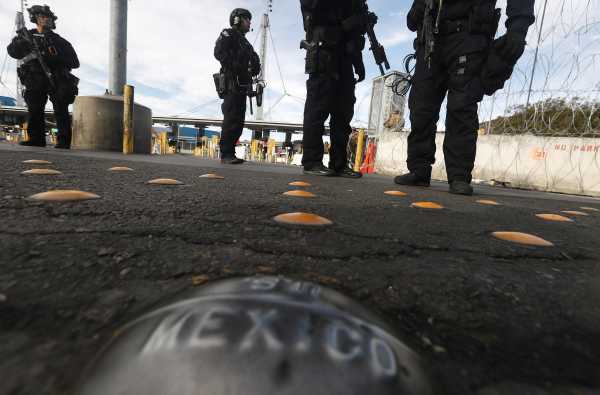
The United States has a 140-year-old law, the Posse Comitatus Act, that generally prevents the military from engaging as law enforcement on American soil. As Alex Ward has explained for Vox:
But Trump has the power to authorize the military to act as law enforcement at the border in case of a violent uprising, under the Insurrection Act, which allows the president to activate the military to act like law enforcement in the case of “insurrection, domestic violence, unlawful combination, or conspiracy.”
This has happened many times before, most recently in the 1990s, during the riots in Los Angeles, also known as the Rodney King riots, at the request of the state. President George H.W. Bush invoked the Insurrection Act authorizing the Army, Marines, and the National Guard to enforce civilian law.
As tensions build at the border, lethal violence is a possibility. US law enforcement has already turned to projectiles and tear gas to deter crowds at San Ysidro, the country’s biggest — and now closed — port of entry in San Diego, California.
And there’s not much Congress or the courts can do about it immediately.
There’s not much Congress can do at the moment
The checks on presidential power come from Congress and the courts, but Banks says “posse comitatus is more a symbol” — law that’s enforceable, but not immediately.
On the ground, violence escalates quickly. Even if Trump’s administration did not have sufficient basis for authorizing lethal force, accountability would likely have to happen after the fact. Posse comitatus is criminal law, and to enforce it would mean federal prosecution.
“Some big deliberative body like the Congress isn’t going to be involved in the fast-moving crisis and for the courts to get involved, it’s going to be too late,” Banks said.
It all comes down to what the Trump administration deems as credible evidence and intelligence. Trump wants Americans to think there is a national security threat and full-blown crisis at the southern border.
The reality at the border is much muddier, as thousands of asylum seekers try to navigate a slow and cumbersome process of gaining entry to the United States, a process made even more difficult now that the US has closed down its biggest port of entry.
Sourse: vox.com
